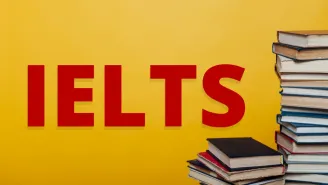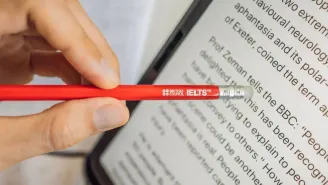Saving the Soil Reading Passage
You should spend approximately 20 minutes answering Questions 1 - 13 based on the Reading Passage below.
Saving the soil Reading Passage
More than a third of the Earth’s top layer is at risk. Is there hope for our planet’s most precious resource?
Paragraph A
More than a third of the world’s soil is endangered, according to a recent UN report. If we don’t slow the decline, all farmable soil could be gone in 60 years. Since soil grows 95% of our food and sustains human life in other, more surprising ways, that is a huge problem.
Paragraph B
Peter Groffman, from the Cary Institute of Ecosystem Studies in New York, points out that soil scientists have been warning about the degradation of the world’s soil for decades. At the same time, our understanding of its importance to humans has grown. A single gram of healthy soil might contain 100 million bacteria, as well as other microorganisms such as viruses and fungi, living amid decomposing plants and various minerals.
That means soils do not just grow our food but are the source of nearly all our existing antibiotics and could be our best hope in the fight against antibiotic-resistant bacteria. Soil is also an ally against climate change: as microorganisms within soil digest dead animals and plants, they lock in their carbon content, holding three times the amount of carbon as does the entire atmosphere. Soils also store water, preventing flood damage: in the UK, damage to buildings, roads, and bridges from floods caused by soil degradation costs £233 million every year.
Paragraph C
If the soil loses its ability to perform these functions, the human race could be in big trouble. The danger is not that the soil will disappear completely but that the microorganisms that give it its special properties will be lost. And once this has happened, it may take the soil thousands of years to recover.
Agriculture is by far the biggest problem. In the wild, when plants grow, they remove nutrients from the soil, but then, when the plants die and decay, these nutrients are returned directly to the soil. Humans tend not to return unused parts of harvested crops directly to the soil to enrich it, meaning that the soil gradually becomes less fertile. In the past, we developed strategies to get around the problem, such as regularly varying the types of crops grown or leaving fields uncultivated for a season.
Paragraph D
But these practices became inconvenient as populations grew and agriculture had to be run on more commercial lines. A solution came in the early 20th century with the Haber-Bosch process for manufacturing ammonium nitrate. Farmers have been putting this synthetic fertiliser on their fields ever since.
But over the past few decades, it has become clear this wasn’t such a bright idea. Chemical fertilisers can release polluting nitrous oxide into the atmosphere, and excess is often washed away with the rain, releasing nitrogen into rivers. More recently, we have found that indiscriminate use of fertilisers hurts the soil itself, turning it acidic and salty and degrading the soil they are supposed to nourish.
Paragraph E
One of the people looking for a solution to his problem is Pius Floris, who started out running a tree-care business in the Netherlands and now advises some of the world’s topsoil scientists. He came to realise that the best way to ensure his trees flourished was to take care of the soil and has developed a cocktail of beneficial bacteria, fungi, and humus to do this. Researchers at the University of Valladolid in Spain recently used this cocktail on soils destroyed by years of fertiliser overuse. When they applied Floris’s mix to the desert-like test plots, a good crop of plants emerged that were not just healthy at the surface but had roots strong enough to pierce dirt as hard as a rock. The few plants that grew in the control plots, fed with traditional fertilisers, were small and weak
Paragraph F
However, measures like this are not enough to solve the global soil degradation problem. To assess our options on a global scale, we first need an accurate picture of what types of soil are out there and the problems they face. That’s not easy. For one thing, there is no agreed international system for classifying soil. In an attempt to unify the different approaches, the UN has created the Global Soil Map project. Researchers from nine countries are working together to create a map linked to a database that can be fed measurements from field surveys, drone surveys, satellite imagery, lad analyses, and so on to provide real-time data on the state of the soil. Within the next four years, they aim to have mapped soils worldwide to a depth of 100 meters, with the results freely accessible to all.
Paragraph G:
But this is only a first step. We need ways of presenting the problem that brings it home to governments and the wider public, says Pamela Chasek at the International Institute for Sustainable Development in Winnipeg, Canada. ‘Most scientists don’t speak the language that policy-makers can understand, and vice versa.’ Chasek and her colleagues have proposed a goal of ‘zero net land degradation’. Like the idea of carbon neutrality, it is an easily understood target that can help shape expectations and encourage action.
For soils on the brink, that may be too late. Several researchers are agitating for the immediate creation of protected zones for endangered soils. One difficulty here is defining what these areas should conserve: areas where the greatest soil diversity is present? Or areas of unspoiled soils that could act as a future benchmark of quality?
Whatever we do, if we want our soils to survive, we need to take action now.
Saving the Soil Reading Questions and Answers
Discover exciting and informative IELTS reading answers about Saving the Soil






